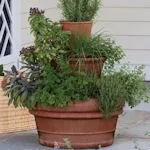
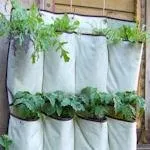
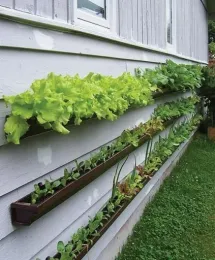
Of the basic herbs that many of us like to grow and use frequently (basil, thyme, oregano, parsley, rosemary, dill, cilantro, chives, and sage, perhaps lavender), most like full sun and heat and will grow heartily from mid spring until late fall. Several are perennials, living through the rest of the year, although with diminished production, and come back enthusiastically year after year. Oregano, thyme, sage, rosemary, lavender, and chives are in this category. Marjoram is a bit more sensitive to temperature, as is parsley, which is biennial, and basil are annuals. Almost all herbs are easily propagated through cuttings, division, or layering.
Think of herbs as a landscape plant. What can they do to add size, form, color contrast, or texture among other plants (rosemary or lavender for example)? What about chives around your bulbs? Parsley as an edging plant? Oregano, marjoram, thyme (the “crawlers” and “bushies”) filling the crevices in your rock garden?
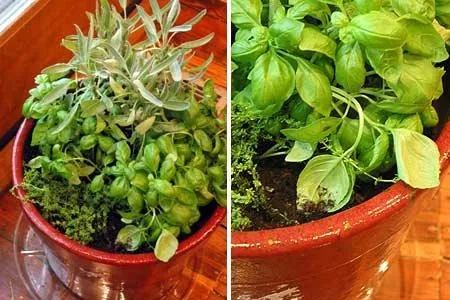
To have herbs close at hand plant them in a garden area close to the house; or consider pots or other containers at your back door. Mixing herbs together in one pot is lovely, providing a mix of textures and colors. Mix with a few flowering plants such aslobelia oralyssum for added interest. Cut back the herbs as you need them or to harvest for preserving. This keeps them from getting “leggy” which makes for a bitter taste. Having some herbs, especially the more sensitive ones, in a pot or pots allows you to move them indoors when the temperature falls. Herbs can be kept all year long for convenient use in a windowsill or pot garden.
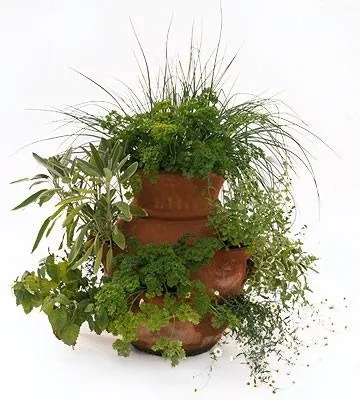
You can preserve your herbs in a variety of ways, the easiest being drying. Of course, the most flavorful way of enjoying them is to use them fresh cut in your cooking or by adding flavored vinegars or oils. These not only are easy to prepare, but make marvelous and well-appreciated gifts, as do prepared dried mixes (Mexican, Italian, Indian, etc.). A variety of herb butters, kept in the freezer as a roll (like cookie dough) allows you to just slice off what you need to sauté, add to a dish, or use as a spread.
Herbs are also used for their scent, in sachets, making soaps or lotions. Many have medicinal uses as well. Refer to the listed sources for details on herb planting, growing, and use for culinary, cosmetic, or medicinal purposes, as well as some innovative ways to grow and display.
Ten Nifty Ways to Grow Your Own Herbs (including making an herb spiral)
http://tipnut.com/herb-spiral/
Herbs for freshening your home
http://tipnut.com/herbs-freshen-home/
Herb gardens, growing, uses, recipes
http://www.culinaryherbguide.com/
Ten Easy Ways to Preserve Herbs
http://tipnut.com/preserve-herbs/

